While the rating tells you how good a book is according to our two core criteria, it says nothing about its particular defining features. Therefore, we use a set of 20 qualities to characterize each book by its strengths:
Applicable – You’ll get advice that can be directly applied in the workplace or in everyday situations.
Analytical – You’ll understand the inner workings of the subject matter.
Background – You’ll get contextual knowledge as a frame for informed action or analysis.
Bold – You’ll find arguments that may break with predominant views.
Comprehensive – You’ll find every aspect of the subject matter covered.
Concrete Examples – You’ll get practical advice illustrated with examples of real-world applications or anecdotes.
Controversial – You’ll be confronted with strongly debated opinions.
Eloquent – You’ll enjoy a masterfully written or presented text.
Engaging – You’ll read or watch this all the way through the end.
Eye opening – You’ll be offered highly surprising insights.
For beginners – You’ll find this to be a good primer if you’re a learner with little or no prior experience/knowledge.
For experts – You’ll get the higher-level knowledge/instructions you need as an expert.
Hot Topic – You’ll find yourself in the middle of a highly debated issue.
Innovative – You can expect some truly fresh ideas and insights on brand-new products or trends.
Insider’s take – You’ll have the privilege of learning from someone who knows her or his topic inside-out.
Inspiring – You’ll want to put into practice what you’ve read immediately.
Overview – You’ll get a broad treatment of the subject matter, mentioning all its major aspects.
Scientific – You’ll get facts and figures grounded in scientific research.
Visionary – You’ll get a glimpse of the future and what it might mean for you.
Well structured – You’ll find this to be particularly well organized to support its reception or application.









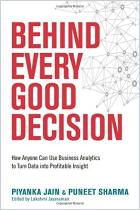
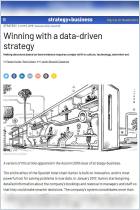
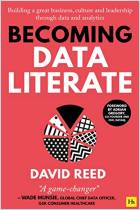
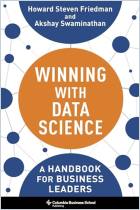
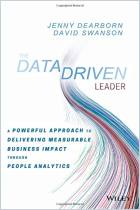
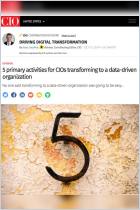





Comment on this summary or Start Discussion
### Summary
### Introduction
The e-book begins via emphasizing the developing significance of facts in modern-day global. It introduces readers to the role of a information analyst, highlighting the skills and equipment vital for success in this area.
### Chapter 1: Understanding Data
This chapter provides a foundational know-how of facts types, assets, and systems. It covers:
- The difference among structured and unstructured records.
- Common information formats and resources.
- The importance of records first-class and integrity.
### Chapter 2: Data Collection and Preparation
Readers find out about the crucial steps concerned in collecting and preparing statistics for analysis, consisting of:
- Data collection strategies and gear.
- Data cleaning techniques to handle lacking or inconsistent records.
- Data transformation and normalization techniques.
### Chapter 3: Exploratory Data Analysis (EDA)
EDA is a critical step within the statistics analysis technique. This bankruptcy covers:
- Techniques for summarizing and visualizing facts.
- Identifying patterns, tendencies, and outliers.
- Using statistical measures to recognize data distributions.
### Chapter four: Statistical Analysis
This chapter delves into the statistical methods utilized by information analysts, which include:
- Descriptive and inferential statistics.
- Hypothesis checking out and self belief durations.
- Correlation and regression evaluation.
### Chapter five: Data Visualization
Effective records visualization is essential for communicating insights. This chapter explores:
- Principles of true information visualization.
- Tools and techniques for growing visualizations (e.G., charts, graphs, dashboards).
- Best practices for imparting facts to exclusive audiences.
### Chapter 6: Predictive Analytics and Machine Learning
An creation to predictive analytics and system learning, overlaying:
- Key principles and algorithms in machine gaining knowledge of.
- Steps worried in building predictive models.
- Evaluating and validating version overall performance.
### Chapter 7: Data-Driven Decision Making
The e-book emphasizes the importance of making knowledgeable selections based on statistics evaluation. This chapter includes:
- Techniques for interpreting analytical results.
- Case studies demonstrating facts-pushed decision-making in numerous industries.
- Ethical issues and facts privateness problems.
### Chapter eight: Tools of the Trade
An evaluate of popular gear and software program used by statistics analysts, together with:
- Programming languages like Python and R.
- Data visualization equipment like Tableau and Power BI.
- Statistical software like SPSS and SAS.
### Chapter 9: Developing Analytical Skills
This bankruptcy affords recommendations and techniques for developing and honing analytical abilties, such as:
- Critical questioning and problem-solving techniques.
- Continuous getting to know and expert improvement.
- Networking and staying updated with industry traits.
### Chapter 10: The Future of Data Analysis
The book concludes with a look at the future of statistics evaluation, discussing rising developments and technologies that will shape the sector, together with:
- Big Data and its implications.
- Artificial Intelligence and superior device gaining knowledge of strategies.
- The evolving position of facts analysts in a statistics-driven world.
### Conclusion
"Be Data Analytical" is a sensible and complete guide that covers the entire spectrum of statistics analysis, from foundational ideas to advanced techniques. Nithya Sashi's clean and engaging writing fashion makes complex topics available, supplying readers with the knowledge and self assurance to assume, examine, and innovate like a facts analyst. Whether you are a amateur or an experienced professional, this ebook gives treasured insights and realistic advice to help you be successful within the ever-evolving discipline of records analysis.
Key Insights and Takeaways
Morrow suggests that decision-making needs both human intuition and data analytics in order to be integrated properly. This core tenet permeates the entirety of the guide — reminding that where data gives itself to the core of understanding, human judgment is, and always will be, irreplaceable. Morrow argues that leaders should create a culture in which employees are encouraged to play with data rather than get bogged down with big data effort and results.